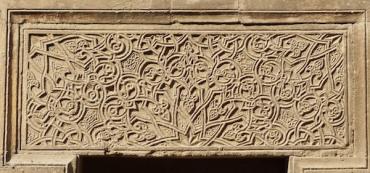Summary
The arabesque was a common design used in the architecture of Islamic Cairo. In the early periods, it was used on stucco and continued to develop on many different other métiers, not as individual patterns, but rather on inscriptions. It then developed in stone, wood, glass and metal and reaching the highest levels of its sophistication in later centuries.
Dr Tarek Swelim is an Associate Professor of Islamic Art and Architecture, at the College of Islamic Studies, at Hamad Bin Khalifa University, in Qatar. He obtained his PhD. from Harvard in 1994, and a MA from the American University in Cairo in 1986. Dr Tarek Swelim is the author of Ibn Tulun, His Lost City and Great Mosque (AUC Press, 2015). He is currently completing his new book on the Mamluks entitled, A Mamluk Sultan’s Era. Lately, Dr Tarek Swelim has contributed to the new exhibition catalogue, The Arabesque: An Introduction (IAMM Publications, 2018), which will be launched at the British Museum in London, on 17 October 2018.
The Barakat Trust, founded as a UK Charity in 1987, supports the study and preservation of Islamic heritage, architecture, archaeology, art and culture by funding students, academic research, publications, digitisation, conservation, conferences and other projects.


